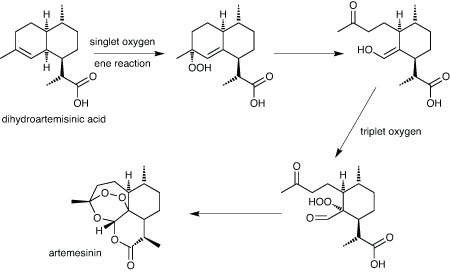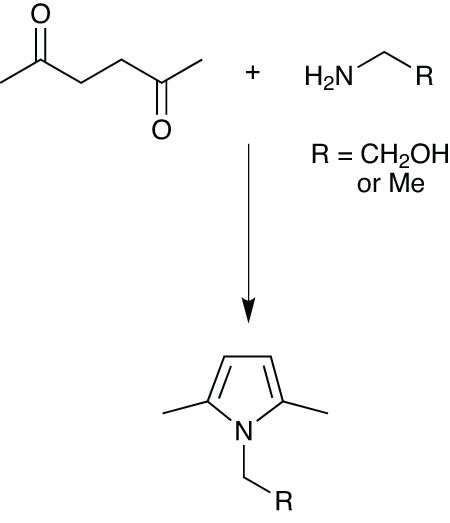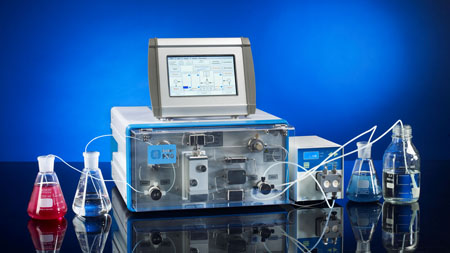Flow chemistry is proving its worth in increasing product yields and reducing reaction times. Dr Sarah Houlton reports on the move from batch to continuous reactors.
In an increasingly environmentally aware world, pressure is on all sectors to reduce carbon footprints and make business more sustainable. While some of the more upstream parts of the chemical industry, for example chlorine manufacture, will always be energy intensive and carbon-hungry, downstream sectors such as pharma manufacturing can be made ‘greener’.
A brief distillation of the 12 principles of green chemistry set out by Anastas and Warner in the late 1990s are laid out in Table 1, and it is clear that while some of these may be obvious, others require more thought and effort to implement, but if they are implemented creatively there is much opportunity for pharma to reduce its environmental impact.
| Table 1: Twelve Principles of Green Chemistry |
| 1. Prevent pollution and waste |
| 2. Design safer products |
| 3. Design less hazardous syntheses |
| 4. Design safer chemicals |
| 5. Use safer solvents |
| 6. Improve energy efficiency |
| 7. Use renewable feedstocks |
| 8. Reduce derivatives |
| 9. Use catalysts |
| 10. Design for degradation |
| 11. Prevent pollution with real-time analysis |
| 12. Minimise accident potential |
One technique that has significant potential in improving sustainability is the use of continuous processing instead of traditional batch processes, where reagents are fed into some form of reactor, with the reaction taking place as the mixture flows through, and products emerge at the other end. The use of a microreactor with small, micrometre-sized channels instead of a large batch reactor can reduce the hazards of exothermic reactions, allow smaller quantities of solvent to be used, and allow reactions to be run in more concentrated form. But flow chemistry does not have to be carried out in a specialist microreactor – it is also possible to use something more akin to a long, thin tube.
The use of a microreactor with small, micrometre-sized channels instead of a large batch reactor can reduce the hazards of exothermic reactions
According to Jun-ichi Yochida and colleagues at Kyoto University, flow microreactors have various features that render them ‘green’.1 They allow two streams of reagents to be mixed extremely quickly, speeding up the reaction, with molecular diffusion driving the mixing. It is easier to control the temperature of the reaction, as the heat is transferred via the reactor surface, and the ratio of surface area to volume is very much greater than in a standard batch reactor. The residence time (the time the reaction spends within the reactor) is controlled by the speed of flow through the reactor, or the length of the channels within it. This allows very short-lived and unstable species to be used, as they have passed through and reacted before they decompose, if the flow rate is set correctly.
Several of the attributes of flow processes meet the requirements of green chemistry in ways that batch processes do not, Yochida says. The better controllability leads to improved product selectivity. Residence time control allows energy to be saved by removing the need for extreme cooling for exothermic reactions, and also can reduce the need for protecting groups by allowing kinetic rather than thermodynamic control of reactions. And the fact that flow chemistry is amenable to on-demand and on-site synthesis reduces the amount of energy used for transportation, and facilitates recycling, he says. Most of these advantages also apply to long tube flow reactors.
James Little from i2Chem gave a great overview of how to get started in flow chemistry at the Scale-Up of Chemical Processes conference held in Boston last July by Scientific Update. While his initial advice might seem obvious – to buy a commercial flow system, task a few scientists to learn about flow, and then start trying different reactions – it is important to begin somewhere. He advises working with experienced flow chemists to select the best reactions for success in flow – whether that is by developing your flow reactions, making the compound for you, or building (or recommending) a flow system so you can make the compound yourself. He also cited a few roadblocks to getting in flow. These include solid reagents or products; it can be possible to get around this by using slurries, for example.
Several of the attributes of flow processes meet the requirements of green chemistry in ways that batch processes do not
To go about converting a batch process to a flow one, he says, first run a batch experiment to gain familiarity and to establish the necessary analytical methodology. Initial screening experiments in flow should use a microreactor system, with a reactor volume less than 500µl. These screening results should be used to design and perform a detailed optimisation study to establish the best reaction parameters. For a multistep process, each of these processes needs to be repeated for each step, and the different flow reactions can then be integrated to make one continuous process. This might require reagent or solvent changes, and additional operations such as separations and extractions. Finally, the flow system can be designed, taking all this into account to meet the desired throughput, using one or more scale-up steps.
Several other factors need to be considered when designing a flow system, Little adds. The reagents and solvents must be compatible with the whole system, including pumps, reactors, tubing and connectors. Continuous monitoring will have to be put in place, whether this is analytical, such as UV, pH or IR, measuring process parameters such as pressure, temperature or flow rate, or leak detectors to ensure safety. And the necessary temperature and pressure will need to be accommodated, as will the desired scale.
An excellent example of the potential of flow chemistry in making APIs has just been published by Peter Seeberger at the Max Planck Institute for Colloids and Interfaces in Berlin.2 The antimalarial artemesinin is a cornerstone of current malaria treatment, but the natural product is extracted from sweet wormwood in only small quantities, and the total synthesis route is impractical and expensive on a large scale. The less complex precursor compound artemesinic acid can be extracted from sweet wormwood, and/or made by biosynthesis in engineered yeast. But it is not simple to convert to artemesinin in a low-cost, scalable, high yielding way.
Seeberger thought the answer might lie in flow chemistry. Starting with dihydroartemesinic acid – either produced by hydrogenation or made directly by yeast in a bioreaction – a continuous photochemical transformation was used to give a reaction cascade that incorporates the characteristic endoperoxide group into the molecule. The process includes an ene reaction induced by singlet oxygen, and the addition of triplet oxygen to give the endoperoxide.
The synthesis is efficient and cheap, but would not be simple to scale up in a batch process because of the problems of getting light to permeate right through the reaction in a large reactor. This is not a problem in a microreactor where a narrow tube can be wrapped around the light source, and the reaction goes to completion in just 4.5mins (Scheme 1).

Scheme 1: production of artemesinin
This now gives access to cheap artemesinin by semisynthesis, with a strain of Saccharomyces cerevisiae having been engineered to produce the dihydroartemesinic acid starting material. With 200g of the active easily made in a day, Seeberger estimates that about 1,500 continuous flow photoreactors would be sufficient to meet global demand of 225 million doses a year. Optimising the process would clearly reduce this.
Many pharma companies are now using flow chemistry in development projects. For example, Eli Lilly scientists investigated using a flow reactor to carry out an ortho-Claisen rearrangement reaction (Scheme 4).3 The original method for making a phenol intermediate involved a high temperature reaction, carried out at 230°C, and at a high concentration in diphenyl ether as solvent. Both of these gave substantial operational issues when carried out in batch mode, particularly once the reaction was scaled up, and so they thought a continuous process might be preferable.

Scheme 4: Eli Lilly used a flow reactor to carry out an ortho-Claisen rearrangement reaction
Standard batch reactors are not amenable to temperatures in excess of about 200°C, and while safety and temperature control might be improved by diluting the reaction mixture and using a semibatch process by adding the starting materials dose-wise, this still left the potential for a significant temperature and pressure rise if the starting material were inadvertently all added at once. In addition, they were concerned that the batch process might lead to product decomposition through long exposure to high temperature during heating and cooling times.
The scientists thought that using a long tube reactor might provide the answer. However, there were still concerns. The reaction was being run in diphenyl ether, but the starting material and the product are soluble in this solvent only on heating, which posed real risks of the reaction tube becoming plugged. They switched the solvent to N-methylpyrrolidinone (NMP), which is high boiling and a better solvent for the substrate. Another advantage of the tube reactor is that it has a higher pressure rating than a standard batch reactor, reducing the risk of hazardous pressure build-up.
The dissolved reagent was continuously pumped through a one-eighth-inch stainless steel tube, heated inside a GC oven, with the product solution flowing out of the other end, where it was collected. The optimum conditions were established as 230°C, 15 bar pressure in a 73.5m long tube, with a residence time within the tube of 4hrs. The total volume of the tube was about 222ml. A solution of 82g of the starting material in 174ml NMP gave, after extraction and purification, 81g of the product; this was 93% pure – representing a 73% yield – better than the original batch process, where the yield and purity were 70% and 94% respectively.
Novartis, too, has investigated the use of flow reactors, this time to scale up a hazardous nitration reaction.4 Highly exothermic reactions such as this present problems in batch reactors because of the danger of a runaway reaction leading to an explosion. Carrying out such processes in continuous flow mode should be safer, with only small amounts of hazardous reagents in the reactor at any one time.
Sometimes it is impossible or impractical to remove a hazardous reaction like this from a synthetic scheme, and the Novartis group explained that hazardous chemistry often causes delays, as it requires extensive safety assessments when scaling up a batch reaction to assess factors such as the energy that is released in the event of a runaway reaction. This can be studied using differential scanning calorimetry. Exothermic reactions in batch reactors are subject to poor heat transfer and low mixing efficiency, increasing the hazards by creating hotspots; in a microreactor, the heat transfer and the mixing are more efficient.
In one example, they looked to scale up a nitration reaction on a quinolone derivative that had been carried out on a small scale in the labs using fuming nitric acid plus acetic acid, with the acidic solution being refluxed at 115°C, but this was limited to about 20g of substrate for safety reasons, making it difficult to scale up to the required 250g (Scheme 3).

Scheme 3: Nitration reaction on a quinolone derivative
In flow, not only are the quantities present in the reactor at any one time much smaller, but the product is pumped out into a quench solution as soon as it is formed, reducing the length of time it is in contact with the acid, reducing the chances of decomposition. Initial attempts using 0.2M nitric acid were too slow, with only 50% conversion after an hour; however, using 1M nitric acid small-scale batch trials went to completion in a few minutes. They also found that complete conversion was achieved at just 90°C, compared with 115°C for batch mode.
The reactor size was scaled up step-wise from 2ml to 40ml, and an 86% yield of product was obtained – comparable to the original batch procedure. A total of 201g of material was made in about two hours in this way – and the entire scale-up, from trial run to final production run, took just one day, against a couple of months to carry out safety tests for a batch process.
Another useful reaction that should be safer in continuous mode is ozonolysis. Ozone is cheap and well known, but ozonolysis reactions are exothermic, and there is potential for the build-up of explosive materials. Several groups have been studying the potential of using capillary reactors for ozonolysis, as this could reduce the hazards of the exothermic process, and if the explosive ozonide adducts are quenched effectively within the flow process, the explosion risk would also be significantly lower.
One of these groups is a team at University College London, who used the ozonisation of 1-decene as a test reaction.5 The system is complicated here by the fact that it is a two-phase system, as ozone is a gas.
The common commercial Vapourtec flow system – also used by the Novartis group for its nitrations – was used in conjunction with a cooled flow cell, with the ozonide being quenched using triphenyl phosphine. They found that the oxidation of the 1-decene proceeded well – they were able to carry out the reaction at a much higher temperature than in a batch reactor, at -10°C rather than the normal -78°C, giving a much more energy efficient scale-up without the safety worries carrying a batch ozonisation out at that temperature would cause.
A group at Radboud University Nijmegen in the Netherlands has used a microreactor for the rapid scale-up of a pyrrole synthesis (Scheme 2).6 The Paal-Knorr synthesis involves the cyclocondensation of 1,4-diketones with nitrogen-containing species such as amines to give pyrroles, and as it can be used in heavily functionalised systems it is useful in the synthesis of APIs. However, again it is an exothermic process, and a microreactor might be used to scale it up safely.

Scheme 2: Radboud University Nijmegen’s pyrrole synthesis
The diketone and amine substrates were separately dissolved in methanol, and injected into the microreactor. Where the amine was ethanolamine, the optimum settings were found to be an amine:diketone ratio of 5:1, a reaction time of 100 seconds, and a temperature of 20°C. Ethylamine required a ratio of 10:1, with the same time and temperature.
It was then scaled up, first into a microstructured flow reactor with an internal volume of 2.4ml, where the channels were slightly wider and thus diffusion mixing was no longer sufficient; folding flow-type mixers were integrated along the length of the channel to overcome this. Four of these were then run in parallel, giving a total internal volume of 9.6ml. Using ethanolamine as the amine substrate, after optimisation 100% conversion was seen, and with a total feed of 5.4ml/min and a run time of 1hr, almost 56g of the pyrrole product was obtained in 96% isolated yield.

ThalesNano has developed the H-Cube Pro flow reactor as a follow-up to the H-Cube. This version offers greater hydrogen production for higher throughput, wider temperature capability including – for the first time – active cooling for more selective reactions, and a new graphical interface with real-time reaction monitoring/data logging and method storage capabilities. The H-Cube Pro is also forward-compatible with several upcoming low cost reactor modules to expand the chemistry capabilities still further. Chemists can look forward to using other gases such as CO2, O2 or Syngas on the same instrument they already use for their hydrogenations. Another module allows homogeneous reactions to be performed at higher than microwave temperatures and pressures.
references
1. J.-i. Yoshida et al. Chem. Sus. Chem. 2011, 4, 331
2. F. Levesque and P.H. Seeberger; Angew. Chem. Int. Ed. 2012, 51, 1706–1709.
3. J.A. Rincon et al. Org. Proc. Res. Devt 2011, 15, 1428
4. C.E. Brocklehurst et al. Org. Proc. Res. Devt 2011, 15, 1447
5. M.D. Roydhouse et al. Org. Proc. Res. Devt 2011, 15, 989
6. P.J. Nieuwland et al. Org. Proc. Res. Devt 2011, 15, 783




